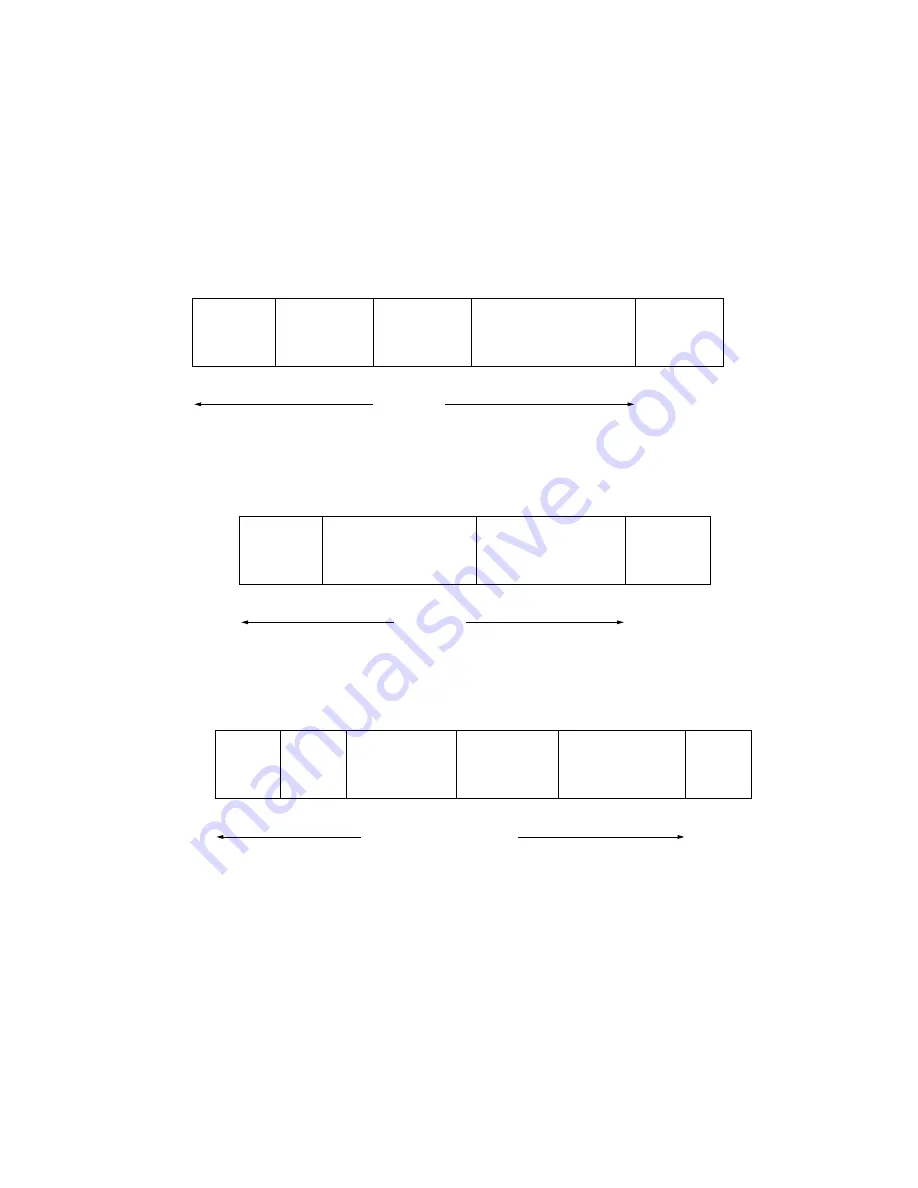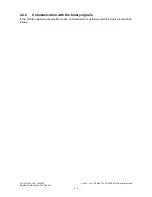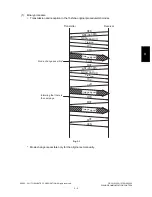
GD-1210/1250/1270/1160/1260
© 2006 - 2011 TOSHIBA TEC CORPORATION All rights reserved
DIALING/COMMUNICATION CONTROL
3 - 12
(4) Training
The training is performed in the binary procedure to surely transmit the image signals.
• Training signal
The training signal is transmitted following the DCS signal at the modem speed specified by
the DCS signal. Responding to this training signal, the receiving side adjusts the auto-equal-
izer.
• Format of the training signal
- 14.4 Kbps, 12 Kbps
Fig. 3-4
- 9600 bps, 7200 bps
Fig. 3-5
- 4800 bps, 2400 bps
Fig. 3-6
• TCF signal
An error may occur in the image data if the training is not performed correctly. The transmit-
ting side sends a TCF signal and checks if any error occurs in image data before the image
data communication to follow. When the receiving side detects an error in the TCF signal, it
transmits an FTT signal to the transmitting side to request the retraining. When there is no
error, the receiving side transmits a CFR signal.
The TCF signal transmits all zeros for 1.5 seconds at the same modem speed as that for the
training signal.
Alternation
of ABAB
Scrambled binary data “1”
Segment 1
Segment 2
Segment 3
Segment 4
106 msec
1240 msec
27 msec
20 msec
1393 msec
Equalizer
adjustment
pattern
Chain-store
information
sequence
TCF
(Binary)
(Hexa or octal)
V.29
No signal
TCF
Repeating 2-state
signal
Scrambled data “1”
Segment 1
Segment 2 / Segment 3
Segment 4
20 msec
53 msec+160 msec
20 msec
253 msec
Non-
modulated
carrier
No signal
(Binary)
Scrambled data “1”
(Hexa or octal)
0° to 180°
2-phase pattern
(Binary)
TCF
Continuous
180° phase
inversion
Segment 1Segment 2
Segment 3
Segment 4
4,800 bps: 923 msec,
2,400 bps: 1158 msec
V.27ter
Segment 5
















































